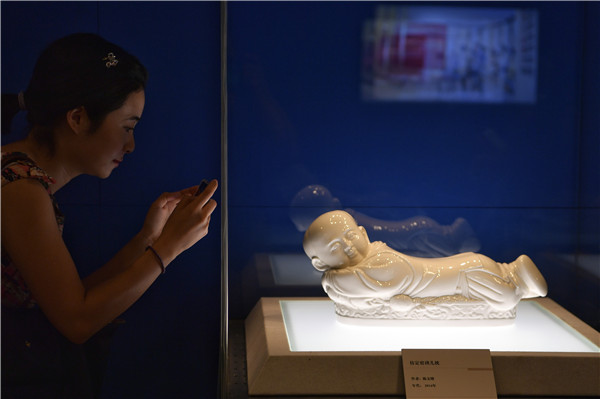 |
|
A copy of the Ding ceramic pillow by the late artist Chen Wenzeng, featuring a baby boy is on show at the National Museum of China. [Photo by Jiang Dong/China Daily] |
An ongoing exhibition in Beijing showcases the excellence of the 'five great kilns' of imperial China. Lin Qi reports.
Some 40 years ago, the late Chen Wenzeng became an artisan at a porcelain-making factory in his native Hebei province. There he met two workers, Lin Zhanxian and He Huan. The three of them then devoted themselves to restoring the glory of Ding ware.
For many centuries, between the Tang (618-907) and Yuan (1271-1368) dynasties, kilns in Hebei's Dingzhou county, now called Quyang, where Chen was born, produced white ceramics, making the Ding kilns one of ancient China's "five great kilns".
The technique, however, declined and disappeared in chaos after Yuan rule ended.
Relying on scanty historical records, the trio then revived the technique of making Ding ware.
Their reproductions show how a Ding ceramic is unique with its paper-thin body, its smooth texture and sound, which resembles that of the ancient Chinese percussion instrument qing.
As for Chen, one of his celebrated works is a copy of Northern Song Dynasty (960-1127) pillow. It is molded in the shape of a baby that lies on its belly, and its back is where people rest their heads.
There are three original ceramic pieces in existence in China: one housed at the Palace Museum in Beijing and the other two are at Taipei's Palace Museum.
Meanwhile, before he died in 2016, Chen donated one of his pieces (copies) to Beijing's Palace Museum and an identical work to the National Museum of China. The latter is now on show at an exhibition of the National Museum of China's recent acquisitions of modern porcelain pieces.